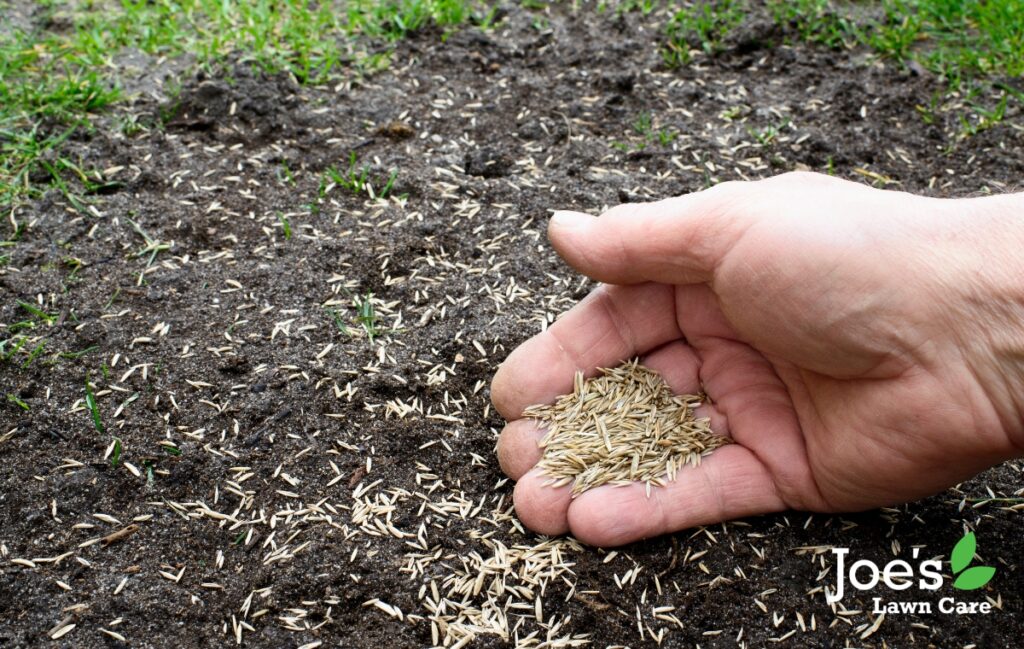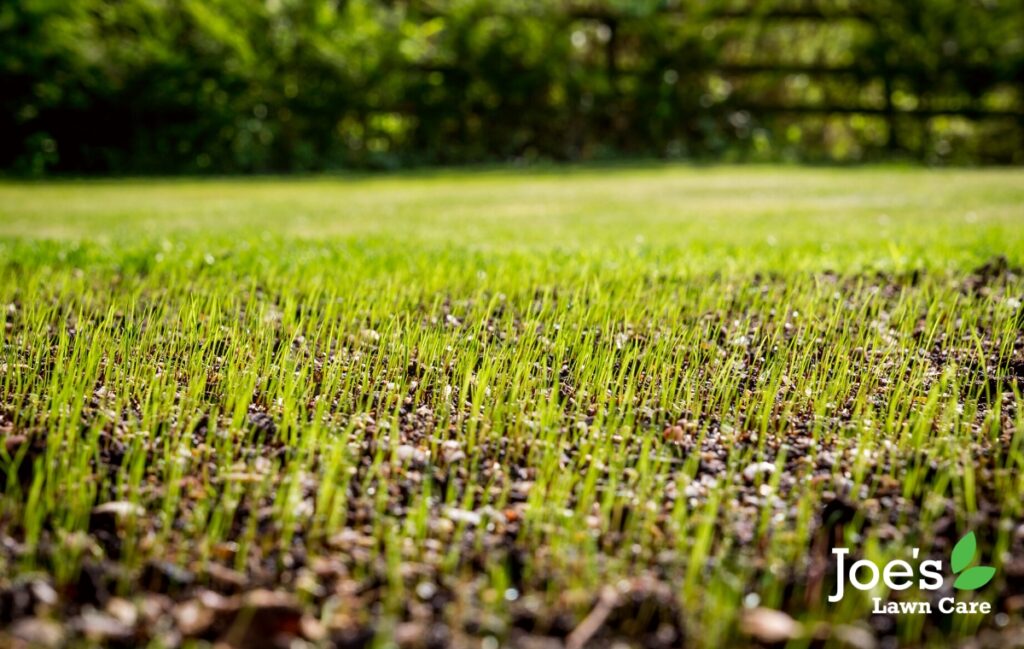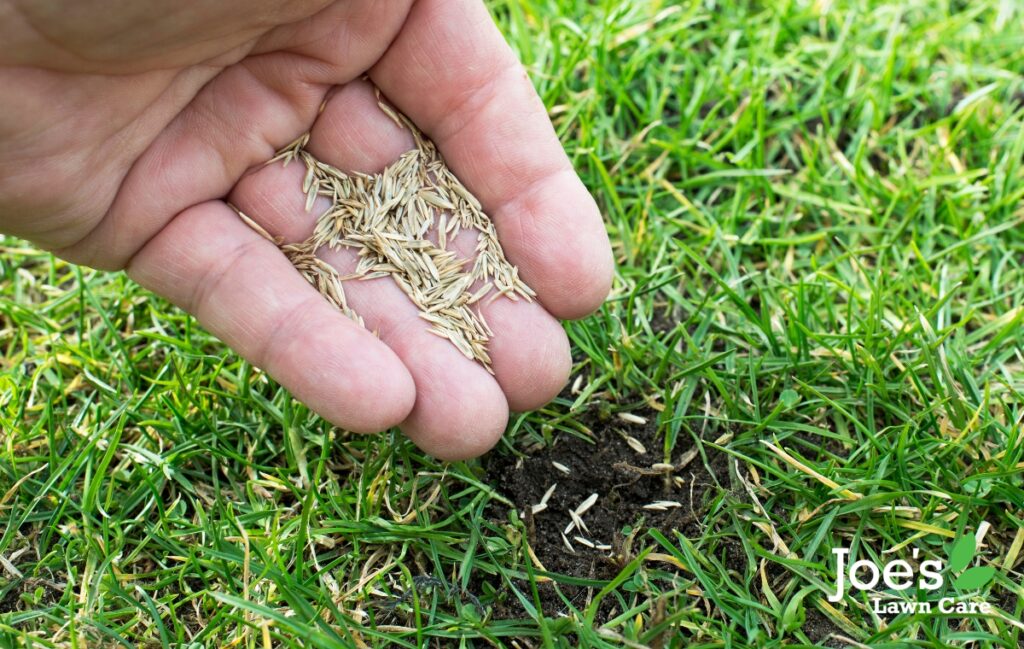Here’s everything you need to know about reseeding your lawn, from the benefits to the best times…
There’s a moment in life, usually when you get past the age of 34, when you find yourself out walking the dog only to be distracted by a house nearby that has the most impressive of lawns; one that looks more like a rich, green carpet than a patch of turf. That’s when you find yourself wondering how they do it. Well, to make you feel a little better about yourself, a lot of it will have to do with the ideal soil and perfect growing conditions. That said, even the optimum environment isn’t enough; you need to treat your lawn like an ongoing project that needs consistent maintenance. That’s where reseeding comes in and, more specifically, timing it just right.
Now, you’re probably wondering why it matters so much. Well, if your idea of a good looking lawn is uniformity in texture, colour, height and density, then reseeding (also known as overseeding) is about to become your best thing. After all, the last thing you want is a patch of grass that’s both thin and bare, while the second last thing you want is to invest all that time and effort into reseeding only to have picked the wrong time to do it. That’s why we’ve pulled together this guide on all things overseeding, from the best times and benefits when you reseed your lawn. You are welcome.

3 Signs You Might Need To Reseed Your Lawn
Reseeding is great, but it’s also essential to understand the reasons behind the decline of your lawn, otherwise you’ll just be putting a band-aid over a recurring issue. Not only that, but if you can find the underlying issues, and fix them with the proper treatment, you might just find your lawn heals itself. And if those bare, brown or weed-filled patches stay persistent, then reseeding might be the answer.
Insects:
Yepp. There are certain types of grubs and bugs that feed on root systems
depriving individual blades of grass of moisture, or even lay their eggs within the stems,
leaving these larvae to feed on the stems and plant crowns.
Disease:
If you’re looking at a patch of grass that’s either brown, yellow or shows up as circular rings, there’s a pretty good chance that your lawn has become the subject of a disease. The same goes for any blades that seem to be covered in cobweb-like things when they get wet. Whatever the case, make sure you get a lawn care professional out to assess the root cause (no pun intended).
Weeds:
When it comes to controlling weed growth, the best thing you can do is a) lay the right grass for your area and b) keep on top of your lawn maintenance tasks. That’s because the healthier, thicker, lusher your lawn is, the better it will be at defending itself.
That’s the power of a regular maintenance schedule. That said, a few weeds will always manage to creep in, so make sure you know what you’re dealing with so that they can be dealt with effectively, whether they’re broadleaf weeds or a grassy weed.

The Benefits of Reseeding Your Lawn
Weeds. That’s pretty much the crux of it. Weeds are opportunistic with this incredible ability to spread hard and fast with so much ease, meaning any thin or bare patch will be pounced on by weeds. It’s what they do. But worse than that, weeds will also compete with your lawn for both water and nutrients. So make sure you kill them first and then reseed to prevent them from filling those spaces. As for the other benefits, well, here they are:
Renewal:
Reseeding helps renew the lawn and improve its overall appearance. It can fill in bare spots, improve density and uniformity, and create a lush, green landscape.
Disease Resistance:
Over time, lawns can become infected with diseases that can weaken or kill the grass. Reseeding can help create a more disease-resistant lawn.
Pest Resistance:
Reseeding can also help create a more pest-resistant lawn by introducing grass varieties that are less susceptible to common pests.
Adaptation:
Reseeding allows you to choose grass varieties that are better suited to your local climate, soil conditions, and sun exposure, improving the lawn’s ability to adapt and thrive.
Environmental Benefits:
A healthy, well-maintained lawn can provide a range of environmental benefits, such as reducing erosion, improving air and water quality, and providing habitat for wildlife.

The Best Times To Reseed Your Lawn
There are three optimal times to keep in mind when you’re reseeding, and they go like this:
- When temperatures begin to moderate: The ideal temperature for grass seed germination is between 10 and 16 degrees Celsius, which tends to be in spring (March, April and May) and late summer (between mid-August all the way through to October).
- When there’s adequate moisture in the soil: this is vital for germination and the development of your grass roots, making spring and early autumn the ideal to get reseeding; unless there’s barely any rain, in which case wait it out a bit.
- When crabgrass is an ongoing problem: wait until this nasty weed starts to wilt with the late-summer heat and then start reseeding, as this will help you identify where the worst bare areas are.
Thanks for reading our guide on the best time to reseed your lawn. For more lawn care tips and tricks, follow us on Facebook and Instagram.





